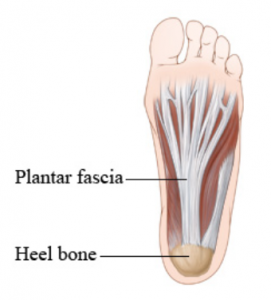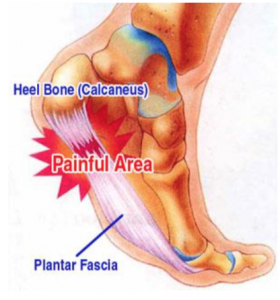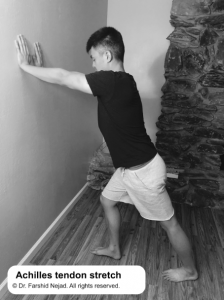By chance, have you been dealing with foot pain lately? When you get out of bed in the morning, do the first few steps cause discomfort in the heel of your foot? If so, then you may want to read on. There is a likely chance that you suffer from a common condition known as Plantar Fasciitis. It is categorized as an overuse injury localized to the sole of the foot. Its symptomatic origin is from the long, flat, band-like ligament that connects the calcaneus (heel bone) to the metatarsals and phalanges (toe bones). This ligament is known as the plantar fascia, hence the condition’s name.
It is categorized as an overuse injury localized to the sole of the foot. Its symptomatic origin is from the long, flat, band-like ligament that connects the calcaneus (heel bone) to the metatarsals and phalanges (toe bones). This ligament is known as the plantar fascia, hence the condition’s name.
Plantar Fasciitis (PF) is called an overuse injury because it manifests when repeated impacts cause the ligament to stretch and sometimes tear. Those who have a recent history of weight gain or have dramatically increased the amount of walking, standing, or running in their daily activities may experience an onset of PF.  Additionally, those with tight calf muscles are more prone to getting PF due to the anatomical connections between the tendon behind the ankle (Achilles tendon) and the plantar fascia ligament. However, people with flat feet or very high arches are both equally affected by PF.
Additionally, those with tight calf muscles are more prone to getting PF due to the anatomical connections between the tendon behind the ankle (Achilles tendon) and the plantar fascia ligament. However, people with flat feet or very high arches are both equally affected by PF.
Treatment for PF can range from stretching to surgery, but it’s best to start with the former. Should the pain be too intolerable at first, it might be best to rest the foot until inflammation has subdued. During this period, you may apply ice on and off the area of pain, for no longer than 20 minutes at a time. Over the counter NSAIDs (i.e. ibuprofen) may be taken as directed on the bottle. Note that medicine and icing will only treat PF in short term. It is important to incorporate stretching in the plan to treat PF in long term. Low-stress exercises to stretch the Achilles tendon and plantar fascia are the key goals in therapy.
Note that medicine and icing will only treat PF in short term. It is important to incorporate stretching in the plan to treat PF in long term. Low-stress exercises to stretch the Achilles tendon and plantar fascia are the key goals in therapy.
Surgery should always be the last resort, only after all other options have been exhausted. If the aforementioned noninvasive treatments do not help alleviate your symptoms, then scheduling an office visit would be beneficial. Other treatment options that can be explored are orthotics or injections.

